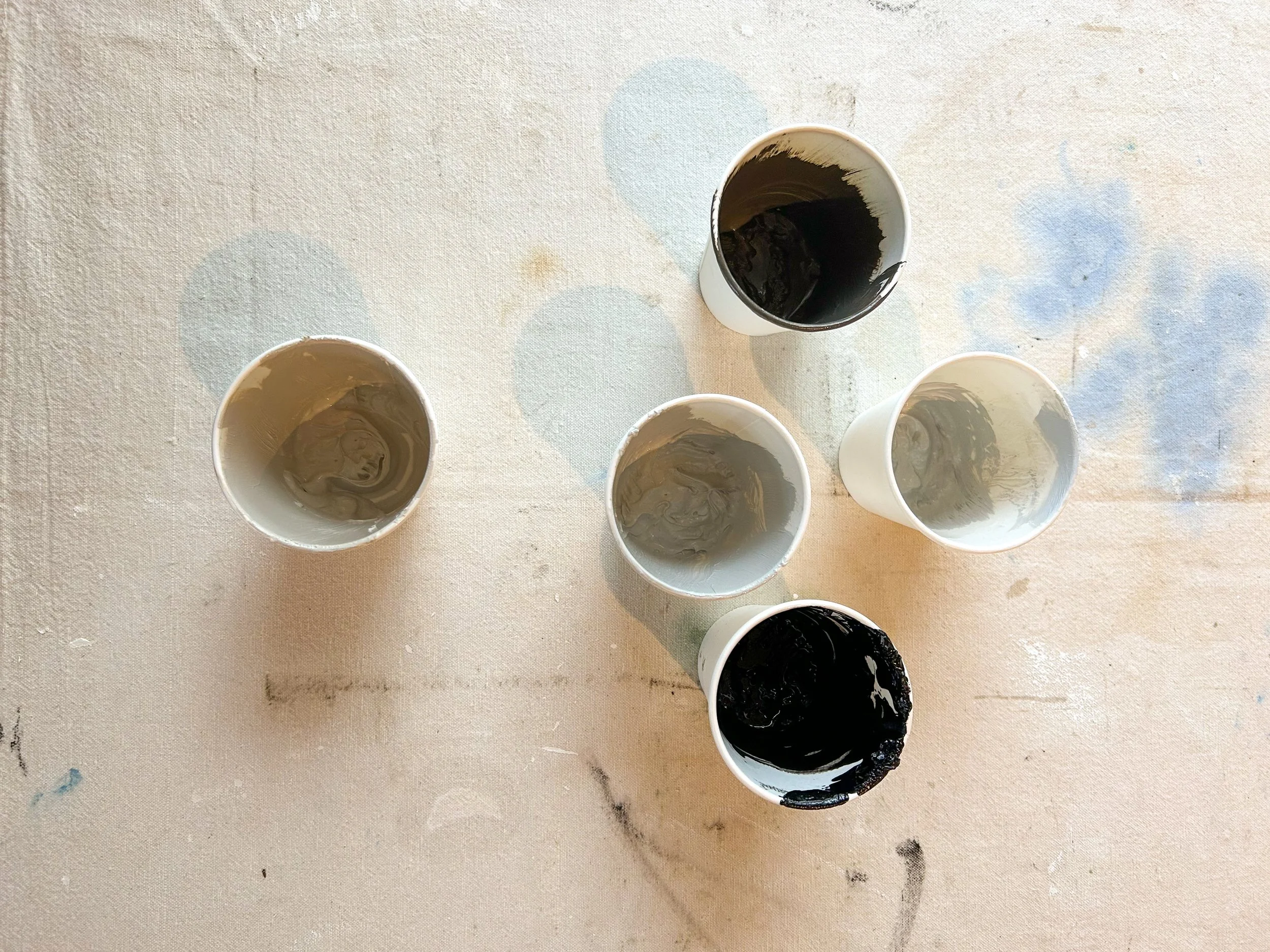
Steps to Creating an Oil Painting
Like many artists, I was drawn to art and started to draw and actively paint pictures as a child. I studied design at the Massachusetts College of Art and Design in Boston, earning a BFA, and continued my education at the Cranbrook Academy of Art in Bloomfield Hills, Michigan, where I received an MFA. My focus was on graphic design and art history. My painting skills developed through extensive reading about art and artists, observing artworks in museums and galleries during my travels, and, most importantly, through consistent practice at the easel. The process I follow to create and present finished oil paintings is detailed and requires considerable time and care.
1. Structure and Surface
The first step is to cut a piece of canvas or linen and stretch it over stretcher strips or wooden panels. Once the material is tightly secured to the support, I apply a coat of a glue-like liquid called “size,” allowing it to dry completely. When properly stretched and sized, the canvas becomes taut like a drum. The sizing acts as a protective barrier, preventing the fabric from absorbing atmospheric moisture that could cause swelling, shrinking, and eventually, cracking of the paint.
Next, I apply a thin coat of gesso to the canvas and let it dry completely. Once dry, I lightly sand the surface to ensure smoothness before applying a second, thicker coat. Depending on the texture and feel of the surface, I decide whether a third coat is necessary to achieve the desired finish.
Next, I apply an even coat of light gray oil paint over the surface and allow it to dry for at least two weeks—often setting the prepared canvas aside for several months—before beginning the painting process.
2. Paints
I paint exclusively with handmade oil paints crafted by Williamsburg, named after the Brooklyn, New York neighborhood where the company was founded. These paints are produced in small batches by skilled artisans, using carefully sourced pigments from around the world, resulting in a distinctive consistency and texture. I favor a palette dominated by earth tones, often with a subtly gritty quality, complemented by neutral grays and a select range of smoother colors. This carefully chosen palette reflects my artistic vision and supports my goal of creating calm, soothing impressions.
3. Techniques
Over several decades, I have developed and refined a variety of painting techniques that are integral to my artistic process. Depending on the intended effect, I may complete a work rapidly—such as my small landscapes created using a direct “wet-on-wet” approach—or invest weeks or months in larger pieces, allowing layers of paint to dry between multiple stages. My practice involves traditional brushes as well as unconventional tools, including paint scrapers, cloth rags, sandpaper blocks, adhesive tapes, and oil stick pastels. The combination of technique—encompassing process, materials, tools, and time—directly shapes the final outcome of my imagery.
4. Subjects
I investigate fundamental themes—still life, landscape, and non-representational imagery—frequently revisiting them through a wide range of approaches. My deep engagement with painting traditions and understanding of their histories provide a creative foundation, enabling me to produce work that explores the intersections of art and design, representation and abstraction, as well as control and spontaneity.
5. Varnish
The finished painting requires several weeks to dry thoroughly before the final step. I apply a satin varnish from Gamblin, a Portland, Oregon-based company, created in collaboration with the National Gallery of Art in Washington, DC. This varnish enhances the color saturation and depth of the oil painting while providing protection against ultraviolet light and moisture.
6. Frames
For many years, I have primarily framed my work through Metropolitan Picture Framing in Minneapolis, Minnesota, where custom-made frames are crafted precisely to my specifications. Metropolitan’s wood frames create a visual “float” effect, allowing the paintings to remain fully visible without any portion of the canvas being obscured. This approach imparts a fresh, contemporary presentation to the finished piece. More recently, I have developed a creative partnership with Guido Frames, based near Boston, Massachusetts. Each frame from Guido Frames is individually handmade and hand-finished, making every piece a unique work of art. Their craftsmanship is exceptional, and their commitment to quality is outstanding. I believe the essential visual relationship between the painting and its frame is what ultimately completes the artwork.
7. Prices
I am often asked how I determine the prices of my work. Pricing reflects my extensive experience as an artist and takes into account factors such as the size, quality, complexity, and overall impact of each piece. Occasionally, a painting surpasses expectations, embodying distinctive qualities that set it apart. The frame plays a vital role as well; each frame is uniquely crafted to complement the artwork. My paintings are truly one-of-a-kind and cannot be replaced. Beyond serving as unique decorative objects, they embody a creative journey—an interpretation of intellectual, visual, and emotional responses expressed directly through art.
8. Display
I exhibit my work privately in my home painting studio and at our gallery located in a historic building nearby, both in Vermont. My website, glennsuokko.com, also features my paintings. My wife Ann is my partner in our creative and gallery ventures. I am grateful that my paintings attract interest from friends, visitors, seasoned art collectors, and first-time buyers throughout the United States, as well as in Europe, Asia, and Australia.
